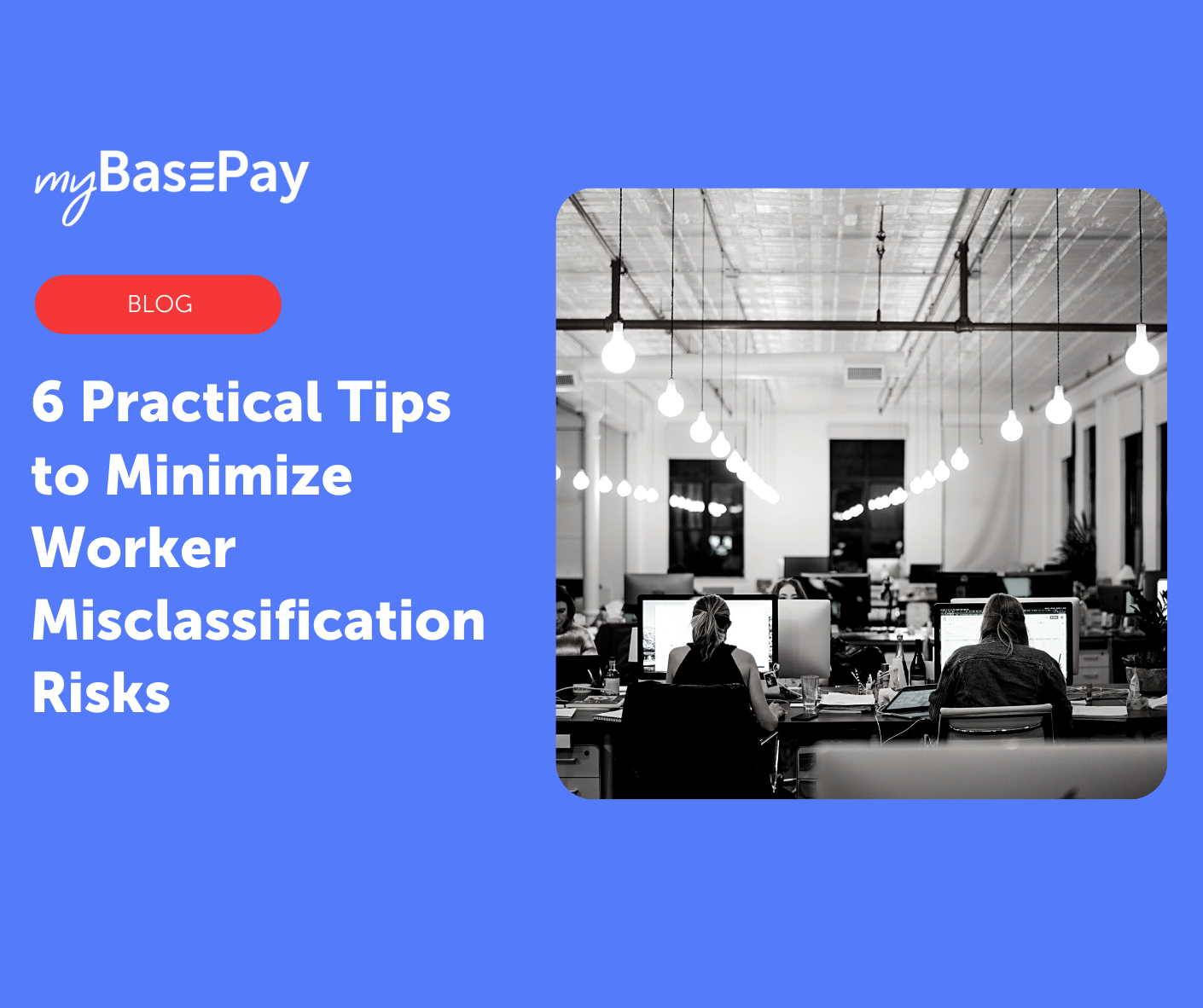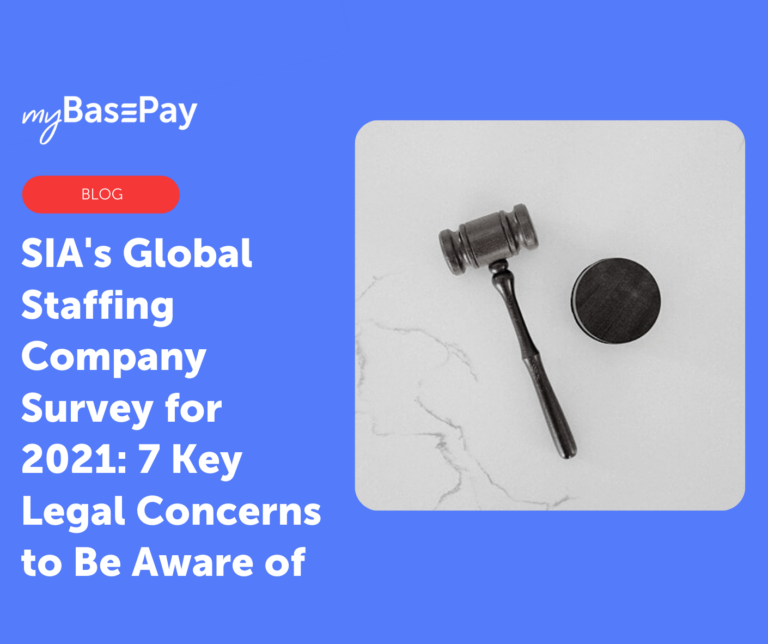6 Practical Tips to Minimize Worker Misclassification Risks
While the surge of independent contractors has brought many competitive advantages to businesses across the country, it can pose some costly consequences when handled incorrectly.
The term “misclassification of employees as independent contractors” has become widespread amongst state and federal legislators and regulators. When hiring independent contractors, many businesses don’t understand all the legal requirements and policies.
Companies aren’t paying unemployment insurance and workers’ compensation premiums, or they’re withholding taxes for workers whom the states believe to be salaried employees and not independent contractors. These issues can lead to lawsuits, costly fines and penalties, interest fees, and even jail time — consequences that can be detrimental to a business.
To avoid this, companies must become better informed on how to prevent such misclassification and its resulting consequences. By understanding the requirements and analyzing the potential risks, companies can take the proper steps to minimize independent contractor misclassification liability.
1. Understand All Independent Contractor Rights
This might seem cumbersome, but to effectively avoid misclassification risk, assessing the rights of an independent contractor is first and foremost. Once an independent contractor has been engaged, keep in mind that they may also perform work for other clients and continue to openly market their services to other employers.
As independent workers, they must constantly be advertising themselves to maintain consistent work. When hiring a contractor, remember they can specify their choice to work for other clients.
They aren’t the same as a full-time salaried employee, so they can provide their own benefits and pay their own taxes, as well. Contracts may state how, how much, and when they get compensated, which is typically done through invoice submissions.
Independent contractors also hold the right to work when and where they choose. If they choose to work varying hours of the week at their home office, you have to uphold those rights. Especially if they’re working for other clients at the same time, they need to make sure they’ve allowed the necessary time to each — which means they may have greater or lesser availability to work for you.
2. Ensure the True Independency of the Contractor
Understanding independent contractor rights are crucial to ensuring the true independence of the worker. It’s easy for management to be too overbearing or too controlling of an independent contractor, but this is strictly considered improper treatment.
To maintain the contractor-client relationship, establish a steady flow of communication between yourself and the contractor. Classification can be complex, and the laws regarding independent contractors are constantly evolving. As you make decisions, stay in close contact with your contractor and make sure they know you’re informed of their rights.
Exerting too much control over the work arrangement can drive away top-talent independent contractors. Likewise, managers should avoid dictating the duties of their independent contractors.
Remember: you’re hiring an independent contractor for the use of their goods or services according to the contract each of you has negotiated. Attempting to establish control over what they do, where they work, and how they do it would be violating that contract, putting you at risk of a lawsuit or other legal troubles.
3. Educate Management on Proper Processes
While you might have an accurate and up-to-date understanding of independent contractor rights and policies, it’s just as important to make sure those under you do, as well.
Education is a key part of maintaining the contractor-client relationship. To ensure all processes are being properly followed, talk to HR managers, supervisors, and other internal employees about the existing laws and guidelines; make sure they know why these laws are important regarding the company’s use of the independent worker. If something goes wrong, they will be held just as accountable as you.
You can minimize the risks of misclassification by ensuring everyone has a general awareness of independent contractor rights. Differentiating employees from independents will ensure the proper treatment of independent workers and better development of effective classification processes.
4. Manage Independent Contractors and Employees Differently
The distinction between employees and independent contractors is outlined clearly under state and federal law. As you go through your hiring processes, you need to understand the differences between each so you can properly structure your work relationships and minimize risks.
Since the two categories of workers are not the same, they should not be managed or taxed the same. As stated before, contractors hold many independent rights; while an employer may determine what type of work an independent contractor does for them, they do not control how, when, or where it is done.
An employee, on the other hand, performs services that are under direct control by their boss, conducts their work on specified days for a specific amount of time, and receives payment according to a predetermined schedule.
The IRS also has strict definitions of the tax process for employees and independent contractors.
According to Business News Daily, “The IRS’s general rule is that an individual is considered an independent contractor if the payer of the services can only control the result of the body of work, not necessarily how it is completed.”
While an employee receives an IRS Form W-4 or W-2, the contractor receives an IRS Form 1099, which allows them to pay their own federal and state employment taxes.
5. Review and Conduct a Legal Analysis
When you need to obtain high-level talent quickly, it’s easy to miss or skim over a crucial step in the classification process. Since the guidelines and processes of independent contractors can be complex, consider taking the time to perform an audit of your current internal processes. Doing so can identify any flaws in your current process, as well as areas that need improvement to effectively engage and classify an independent worker.
Avoiding worker misclassification begins with understanding the risks and consequences yourself. Reviewing, assessing, and auditing can ensure consistency in the acquisition and classification of individual workers.
6. Consult With Outside Professionals
Perhaps the best way to protect your business from misclassification is by consulting with an external source who can help establish a comprehensive worker classification program.
There are several key areas to address, such as making sure contracts are fairly negotiated and written, ensuring the proper filing and payment of taxes, and maintaining the correct submission and deduction of eligible expenses. Worker classification is an important issue to tackle, and ensuring proper compliance and accurate determination starts with partnering up with an expert.
Author: Cesar Romero
Cesar is the Head of Marketing at myBasePay, where he’s responsible for overseeing the company’s content marketing, community, and partnerships strategy. He also co-hosts The Ivy Podcast where he interviews executives from Fortune 500 companies on executive leadership. When he’s not helping startups with marketing and community strategy, you can find him paying it forward by serving as a mentor for leading organizations like StartingBloc, Hive, and Global Citizen Year.






